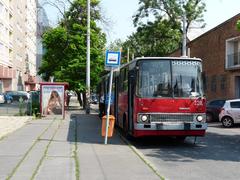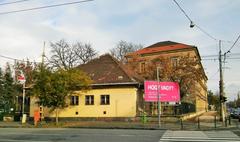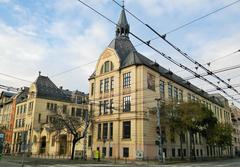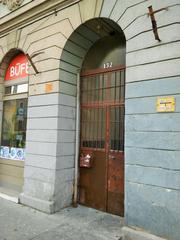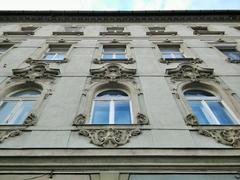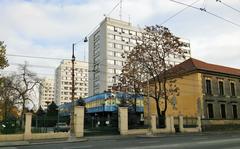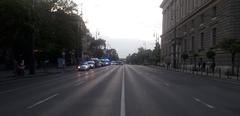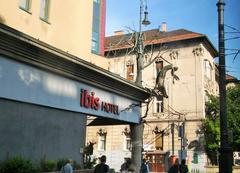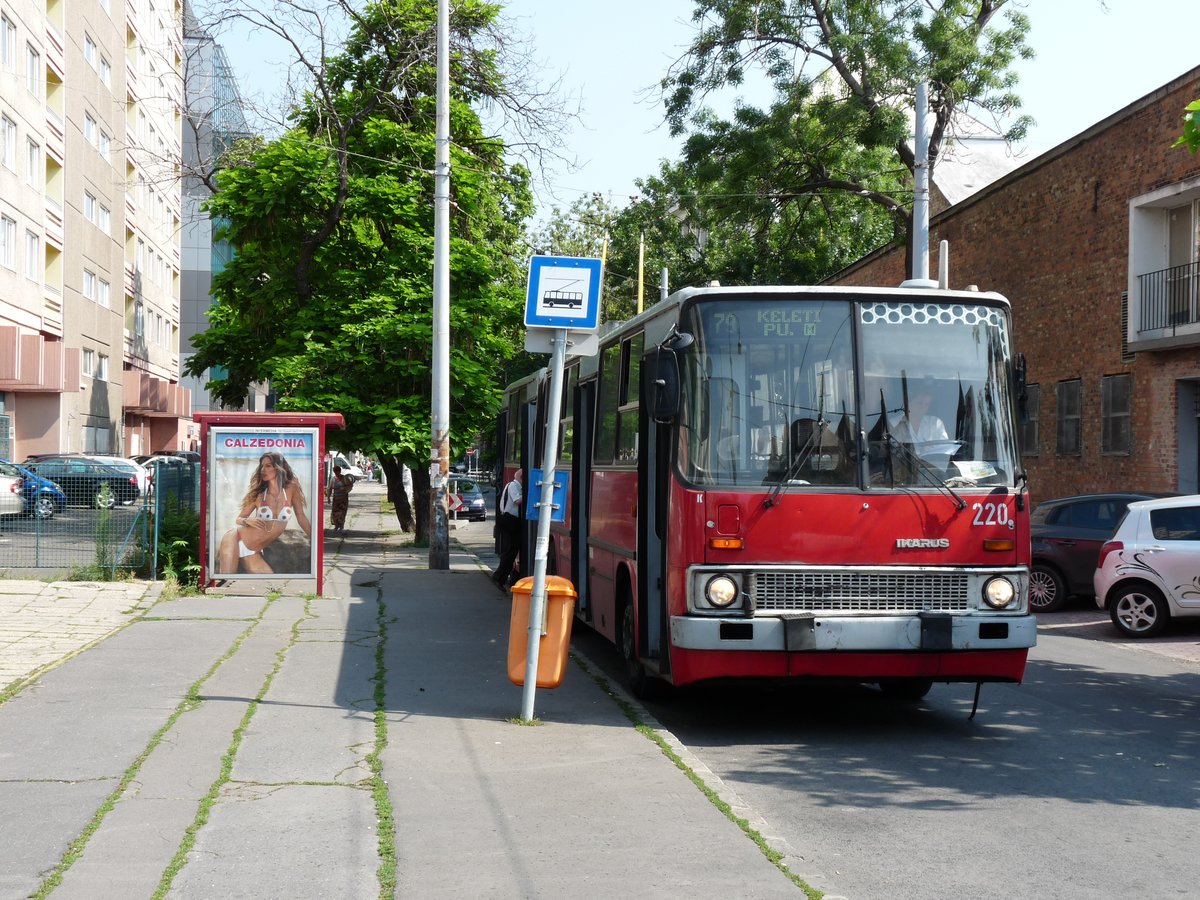
Dózsa György Street Budapest: Visiting Hours, Tickets, and Historical Sites Guide
Date: 14/06/2025
Introduction to Dózsa György Street Budapest
Dózsa György Street is a prominent boulevard in Budapest, renowned for its unique confluence of history, culture, and contemporary urban life. Traversing the XIII District, this vibrant artery borders major landmarks, including the UNESCO-listed Heroes’ Square and the expansive City Park (Városliget). Named after György Dózsa—the martyred leader of the 1514 Hungarian peasant revolt—the street embodies Hungary’s layered past and its ongoing urban transformation (Daily News Hungary).
This guide provides a comprehensive overview of Dózsa György Street, detailing its historical evolution, key attractions, practical visitor information, and essential travel tips. Whether you are interested in Budapest’s eclectic architecture, its vibrant museum scene, or its green public spaces, Dózsa György Street is an ideal starting point for exploration.
Historical Origins and Urban Development
Naming and Early Integration
Dózsa György Street commemorates György Dózsa, a historical figure both celebrated and debated in Hungarian memory. The street’s former name, Aréna Street, reflected its proximity to major sports venues. After the 1873 unification of Buda, Pest, and Óbuda, infrastructure investments—including bridges, roads, and public transport—integrated the XIII District, with Dózsa György Street emerging as a central urban axis (Budapest City Guide).
20th Century and Modernization
By the early 1900s, the street was lined with a mix of industrial sites and residential blocks, which gradually gave way to elegant apartments and cultural institutions, especially in areas like Újlipótváros. The Dózsa György Street Synagogue, designed by Lipót Baumhorn and completed in 1909, is a testament to the area’s rich Jewish heritage and architectural legacy (Wikipedia: Dózsa György Street Synagogue).
Following WWII, socialist planning reshaped the boulevard, introducing modernist buildings, sports facilities, and residential complexes. In recent decades, urban renewal initiatives have revitalized the street, blending historic and modern elements, greening public spaces, and improving pedestrian and transport connectivity (Espacoeconomia Journal, We Love Budapest).
Architectural and Cultural Landmarks
Heroes’ Square (Hősök tere)
Heroes’ Square, at the western terminus of Dózsa György Street, is a monumental site constructed for Hungary’s Millennium celebrations in 1896. The square features the iconic Millennium Monument, statues of the country’s most important historical figures, and the Tomb of the Unknown Soldier. It is bordered by the Museum of Fine Arts and Kunsthalle (Műcsarnok), both architectural highlights housing world-class art collections (Budapest by Locals).
- Visiting Hours: Open 24/7 as a public space.
- Photography Tip: Early morning or sunset offers optimal lighting for photos.
City Park (Városliget)
Adjoining Dózsa György Street, City Park is Budapest’s largest green space and a hub for recreation and major attractions:
- Vajdahunyad Castle: Showcasing various architectural styles, home to the Museum of Hungarian Agriculture.
- Széchenyi Thermal Bath: One of Europe’s largest spa complexes.
- Budapest Zoo: Family-friendly destination.
The park is open year-round and hosts festivals, concerts, and seasonal events (Try Travel).
Museum of Fine Arts (Szépművészeti Múzeum)
Located at Dózsa György út 41, this neoclassical museum features an extensive European art collection, with works by Raphael, El Greco, and Goya.
- Visiting Hours: Tuesday–Sunday, 10:00 AM–6:00 PM; closed Mondays.
- Tickets: 3,000 HUF (adult); discounts for students, seniors, and families. Online and onsite purchase available.
Kunsthalle (Műcsarnok)
At Dózsa György út 37, the Kunsthalle is renowned for its contemporary art exhibitions.
- Visiting Hours: Tuesday–Sunday, 11:00 AM–7:00 PM; closed Mondays.
- Tickets: 1,200 HUF (adult); concessions available.
House of Music, Hungary (Magyar Zene Háza)
A striking example of contemporary architecture, the House of Music opened in 2022 at Dózsa György út 35. Designed by Sou Fujimoto, its innovative roof and glass walls create a unique harmony with the surrounding park.
- Visiting Hours: Tuesday–Sunday, 10:00 AM–6:00 PM; closed Mondays.
- Tickets: 2,000 HUF (adult); discounts available.
Museum of Ethnography
Located at Dózsa György út 35, the new Museum of Ethnography is an architectural and cultural highlight. Its green rooftop provides panoramic views, and the museum houses significant Hungarian and international ethnographic collections (Museum of Ethnography).
- Visiting Hours: Tuesday–Sunday, 10:00 AM–6:00 PM; closed Mondays.
- Tickets: 3,000 HUF (adult); 1,500 HUF (children 6–18); children under 6 free.
Dózsa György Street Synagogue
An architectural and historical gem, this synagogue serves as a symbol of the local Jewish community’s resilience and cultural legacy (Wikipedia: Dózsa György Street Synagogue). Visits are by appointment or during community events.
Practical Visitor Information
Transportation and Accessibility
- Metro: Line M1 (Hősök tere, Dózsa György út stations); Line M3 (Árpád híd station nearby).
- Trams: Lines 1, 1A, 4, and 6.
- Buses: Multiple routes serve the area.
- Cycling: Dedicated lanes and MOL Bubi bike-sharing stations available.
- Parking: Limited near Heroes’ Square; public transport is recommended.
Tickets and Passes
- Museum and Attraction Tickets: Available online or at entrance; discounts for students, seniors, and Budapest Card holders.
- Public Transport: Single tickets (approx. 450 HUF); 24-hour passes (approx. 2,500 HUF).
- Budapest Card: Offers unlimited transport and discounted entry to selected attractions.
Accessibility
Most major attractions and transport options are accessible to visitors with limited mobility. Museums offer barrier-free entrances and accessible restrooms.
Dining and Refreshments
Diverse options range from traditional Hungarian restaurants near City Park (e.g., Café Kör, Gundel Restaurant) to street food and international cuisine. Food stalls and cafes cater to all budgets (The Common Wanderer).
Safety and Security
The area is generally safe, but visitors should remain vigilant, especially during crowded events.
Additional Tips
- Most museums are closed on Mondays.
- Tap water is potable; 10% tipping is customary if no service charge is included.
- English is widely spoken in tourist areas.
Events, Festivals, and Guided Tours
- Night of Museums (June): Museums along Dózsa György Street remain open late with special programming.
- National Holidays: Major celebrations on March 15 and August 20 at Heroes’ Square.
- Summer Festivals: Concerts, beer festivals, and open-air events in City Park and adjacent venues.
- Guided Tours: History, architecture, and Jewish heritage tours regularly include Dózsa György Street.
Frequently Asked Questions (FAQ)
Q: Is Dózsa György Street free to access?
A: Yes, the street is a public thoroughfare and can be visited at any time.
Q: How can I reach the area by public transport?
A: Use metro lines M1 or M3, trams 1, 1A, 4, 6, or several bus lines.
Q: Are attractions wheelchair accessible?
A: Most major museums and public spaces are accessible; check individual sites for detailed information.
Q: Where can I buy tickets for museums?
A: Tickets are sold at museum entrances and on official websites.
Q: Are guided tours available?
A: Yes, guided tours in multiple languages can be booked in advance or at major museums.
Emergency Contacts
- General Emergency: 112
- Police: 107
- Ambulance: 104
- Firefighters: 105
Conclusion
Dózsa György Street encapsulates Budapest’s historical depth, architectural splendor, and vibrant public life. From iconic sites like Heroes’ Square and the Museum of Fine Arts to contemporary gems such as the House of Music and Museum of Ethnography, the street is a living narrative of Hungary’s national spirit. Its excellent transport links, accessible facilities, and rich calendar of cultural events make it an essential destination for visitors.
Plan your journey using this guide, check for the latest updates on official museum and city tourism sites, and consider using the Audiala app for personalized travel tips and event notifications.
Sources
- The Martyr Criminal of Hungarian History and the Peasants Revolt Led by Him, 2025, Daily News Hungary
- Angyalföld, Göncz Árpád Városközpont, Újlipótváros, Vizafogó: Budapest City Guide, 2025
- Dózsa György Street Synagogue, 2025, Wikipedia
- Budapest Reconstructions, Changes & Improvements 2025, We Love Budapest
- Urban Dynamics, Public Space, and Modern Development in Budapest, Espacoeconomia Journal
- Things to Do in Budapest, Try Travel
- Museum of Ethnography Official Site
- Budapest by Locals
- The Common Wanderer
- BKK Budapest
- Budapest Travel Tips
